28. Juni – 12. Oktober 2025
(scroll for English)
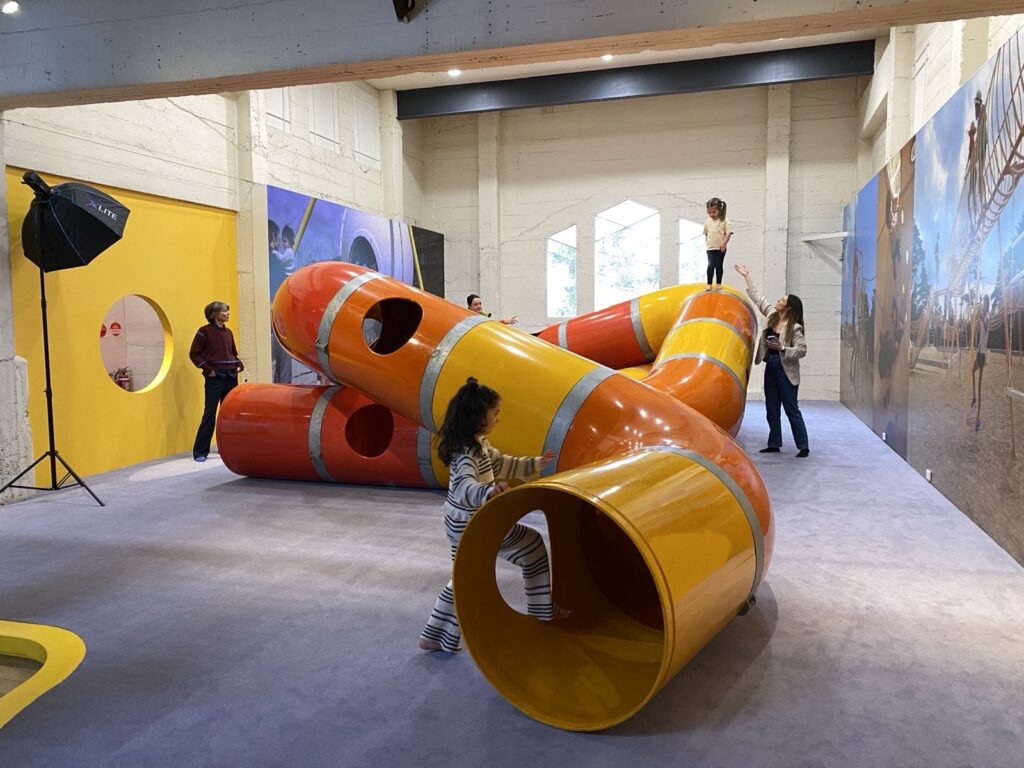
Die Incinerator Gallery befindet sich in einem historisches Baudenkmal von 1929-30, dem „Essendon Incinerator Complex“ in einer Vorortsgemeinde von Melbourne, Moonee Valley City. Es ist eine von 13 Verbrennungseinrichtungen, die unter den Architekten Walter Burley Griffin, Marion Griffin und Eric Nicholls in Australien entstanden (sie wurden bis 1942 betrieben).
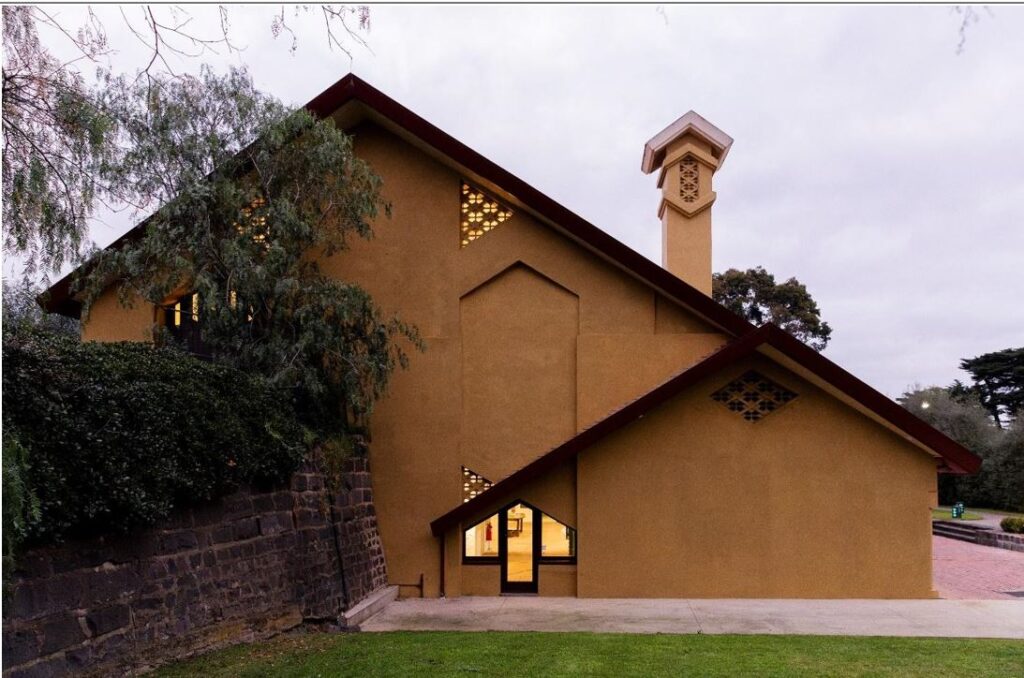
Designed by Walter Burley Griffin and Marion Mahoney Griffin
Photo Gianna Rizzo, 2024
Courtesy Incinerator Gallery MVCC
The Playground Project in Melbourne legt den Fokus auf die Themen Spielskulptur und den Abenteuerspielplatz / DIY, die für den australischen Kontext relevant sind. Die Ausstellung ist ergänzt durch zwei Künstlerprojekte von Simon Terrill und Mary Featherston / Emily Floyd, kuratiert von Jade Niklai, Head of Visual and Public Art, Incinerator Gallery. (scrolle nach unten für Information zur australischen Designerin Mary Featherston)
Im Eingangsbereich der Ausstellung kann sich die Besucherin einen Überblick über die Anfänge der Spielplatzbewegung um 1880 in den USA, Europa und Australien/Melbourne, den Aufbruch zu neuen Spielplatzkonzepten zwischen 1930 und 1970 bis in die heutige Zeit verschaffen.
Im ersten Stock – in der Main Gallery – steht der von Zürich nach Melbourne verschiffte Lozziwurm des Schweizer Künstlers Yvan Pestalozzi im Mittelpunkt. Darum gruppieren sich Prints von künstlerischen Spielskulpturen: von Group Ludic, Anita Aarons, Niki de Saint Phalle, Joseph Brown, Paul Selinger, Isamu Noguchi und Mitsuru Senda.
Die australische Künstlerin Anita Aarons schuf 1952 die abstrakte Spielskulptur Earth Mother für den Philip Park in Sydney, wo sie heute noch steht. Inspiriert vom dänischen Künstler Egon Møller Nielsen und von ihren eigenen Erfahrung suchte sie nach einer Verbindung von Kunst und Spiel. Es ist ein seltenes Beispiel einer von einer Künstlerin geschaffenen abstrakten Spielskulptur im öffentlichen Raum. Die Abstraktion war damals noch eine umstrittene Kunstform.
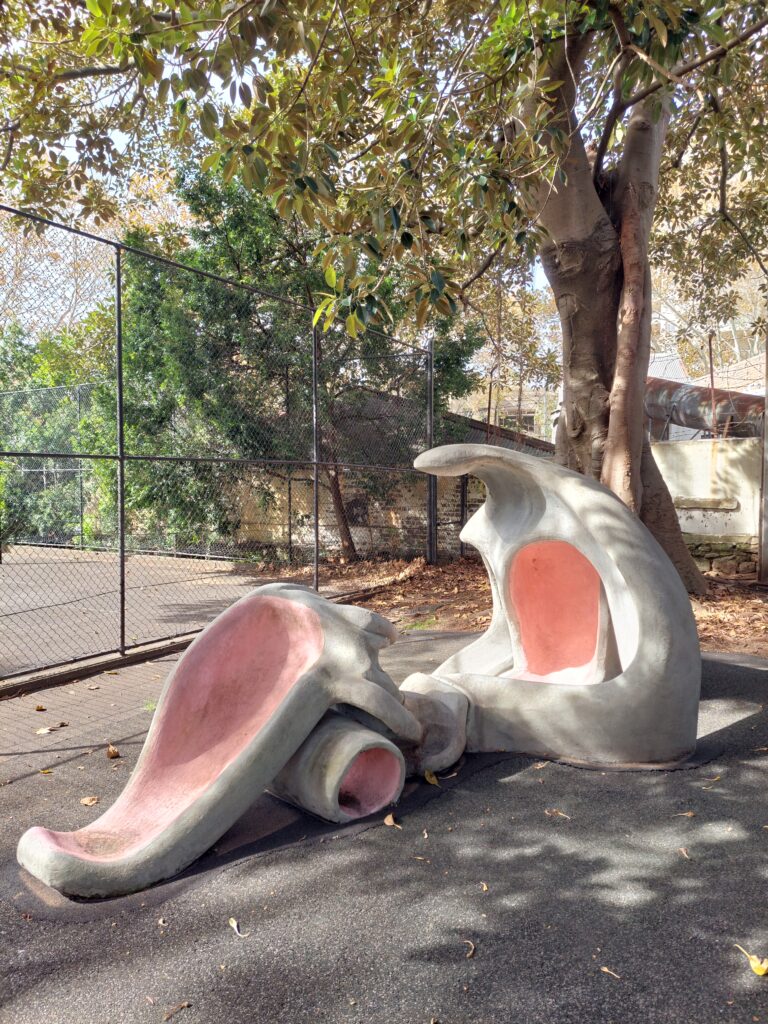
Die „Boadle Hall“ mit der Installation von Simon Terrill widmet sich den Konzept des Abenteuerspielplatzes und DIY. Neben internationalen Beispielen (Kopenhagen, London, Tokio, Kobe) wird hier erstmals die Geschichte des ersten Abenteuerspielplatz in Melbourne und Australien (von den Kindern „The cubbies“ genannt) aufgerollt. Er wurde 1974 von Joan Healey gegründet, nachdem sie in London als playworker gearbeitet hatte. The cubbies lebt heute als „The Venny“ weiter.
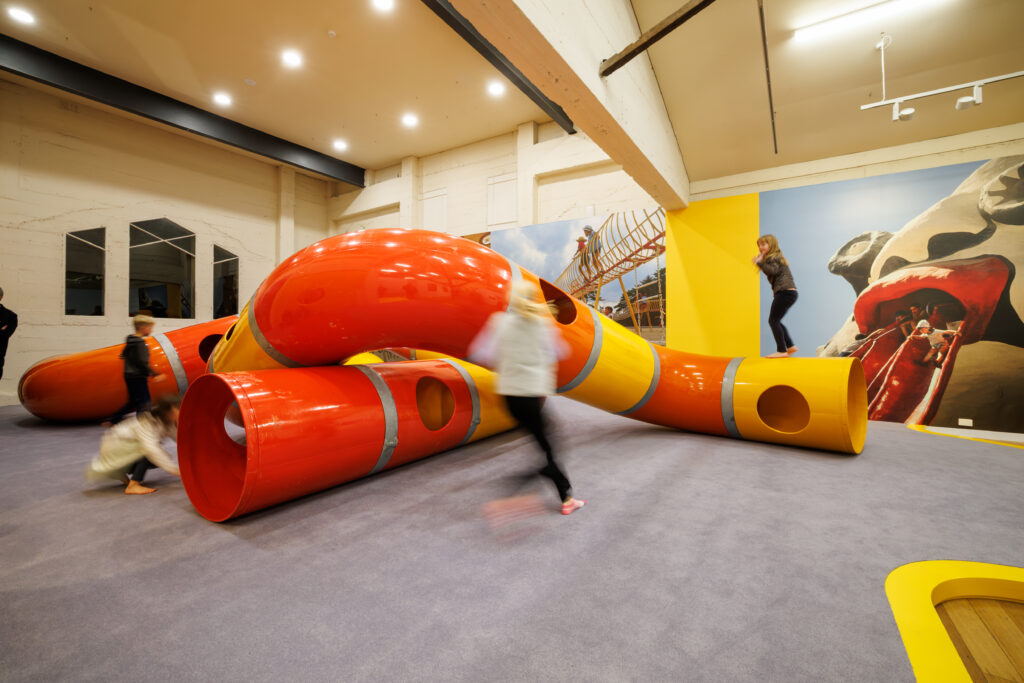
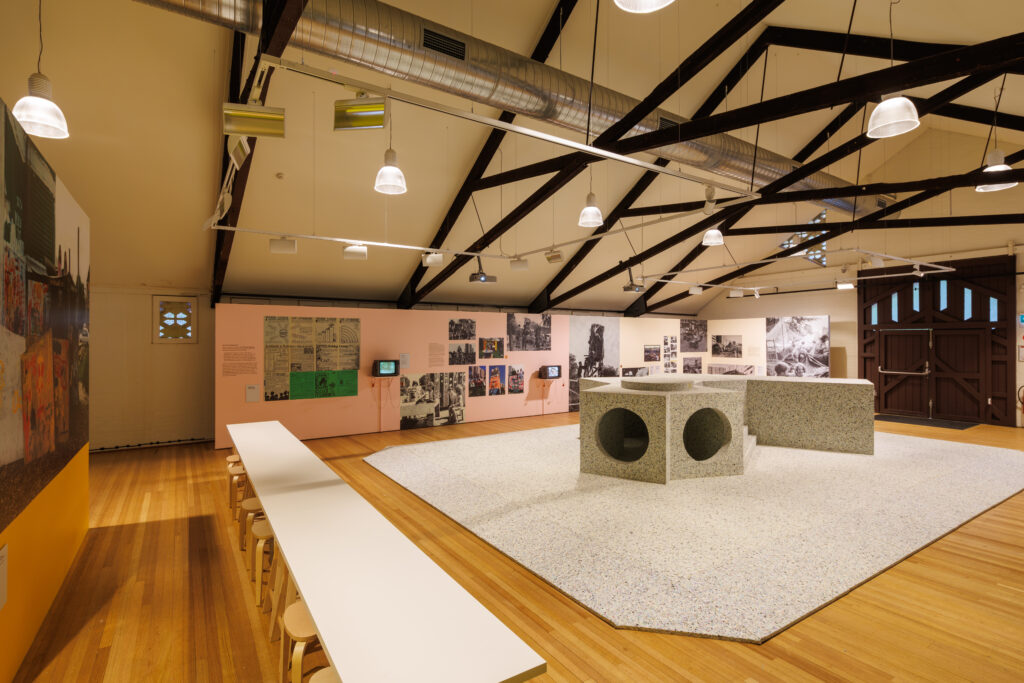
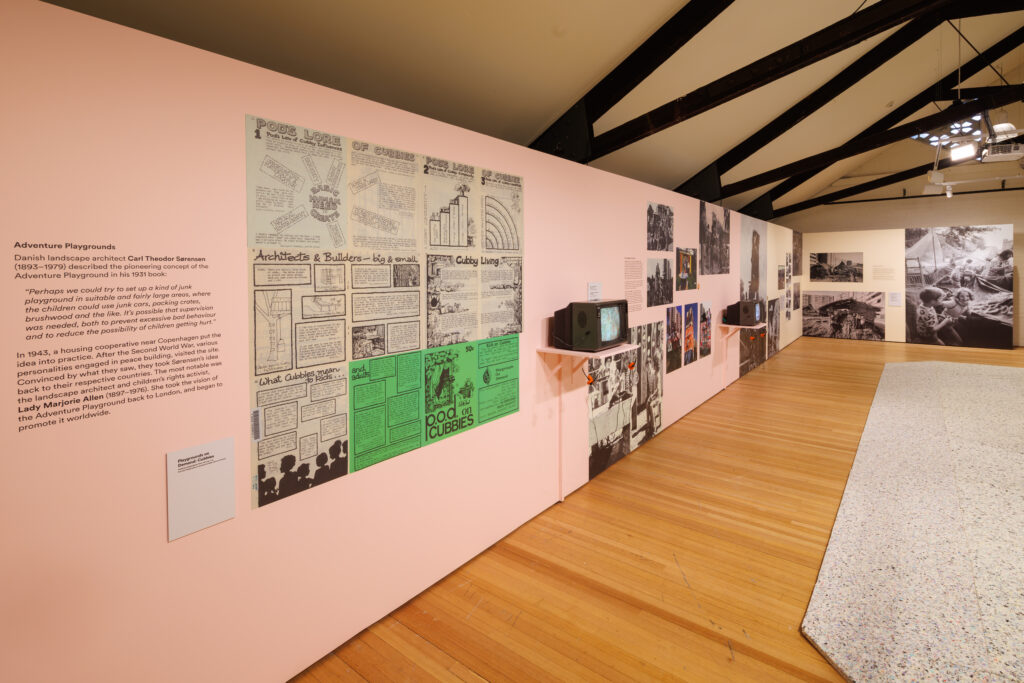
erstellt am 19. August 2025
(English)
The Incinerator Gallery is located in the historic ‘Essendon Incinerator Complex’ a building dating from 1929/30, in the Moonee Valley suburb of Melbourne. It is one of thirteen incineration facilities built in Australia by the architects Walter Burley Griffin, Marion Griffin and Eric Nicholls, and was in operation until 1942.
The Playground Project in Melbourne focuses on the themes of play sculpture and adventure playgrounds/DIY, which are relevant to the Australian context. In addition, the exhibition features two art projects by Simon Terrill and Mary Featherston/Emily Floyd, curated by Jade Niklai, Head of Visual and Public Art at the Incinerator Gallery. Scroll down for information about Australian designer Mary Featherston.
In the entrance hall, visitors can see an overview of the beginnings of the playground movement around 1880 in the USA, Europe and Australia/Melbourne, the emergence of new playground concepts between 1930 and 1970, and up to the present day. The main gallery on the first floor is home to the Lozziwurm by Swiss artist Yvan Pestalozzi . The best of artistic play sculptures by Group Ludic, Anita Aarons, Niki de Saint Phalle, Joseph Brown, Paul Selinger, Isamu Noguchi and Mitsuru Senda are displayed on the walls. Australian artist Anita Aarons created the abstract play sculpture Earth Mother in 1952 for Philipp Park in Sydney, where it still stands today. Inspired by Danish artist Egon Møller Nielsen as well as her own experiences, Aarons sought to combine art and play. It is a rare example of an abstract play sculpture created by a female artist for a public space. At the time, abstraction was still a controversial art form.
Boadle Hall, with its installation by Simon Terrill, is dedicated to the concept of adventure playgrounds and DIY. In addition to international examples (Copenhagen, London, Tokyo, Kobe), the history Melbourne’s and Australia’s first adventure playground (called ‘The cubbies’ by the children) is displayed here. Joan Healey founded it in 1974 by after she had worked as a playworker in London. The cubbies lives on today in ‘The Venny’.
——–
P:S: Die Designerin Mary Featherston (geb. 1943) engagierte sich in den 1970er Jahren u.a. für Community Child Care & Community schools in Melbourne, Sprachrohr war die Zeitschrift Ripple. Die australische Künsterin Emily Floyd inspiriert sich in ihren Kunstwerken von den von Featherston gestalteten Covers und Prints.
In the 1970s, designer Mary Featherston (born 1943) was part of a group campaigning for community childcare and community schools in Melbourne. The magazine Ripple served as a newsletter. Australian artist Emily Floyd draws inspiration for her artwork from Featherston’s designs for the magazine’s covers and prints.
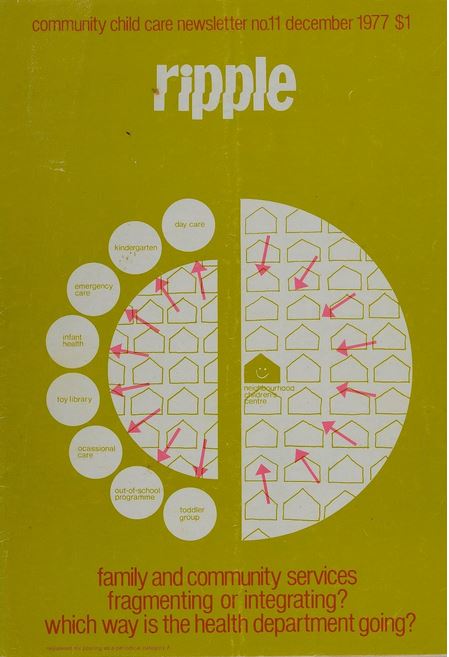
Original cover illustration for Ripple information paper, 1977
Published by Community Childcare, Melbourne
Pressestimmen / media
Ray Edgar, What’s worse than a broken bone? A playground that plays it too safe. A new exhibition ditches the bubble wrap to explore shifting ideas about child’s play, in: The Age, 4 July 2025
Aarthi Mohan: The Playground Project on re-imagining childhood, risk and public spaces, in: stir world, 7 October 2025.
posted 19 August 2025